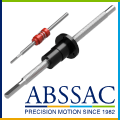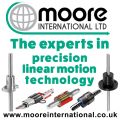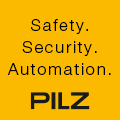
Posted to News on 29th Oct 2015, 16:13
IO-Link and connectivity in the age of Industry 4.0
Industry 4.0 will only become reality via standardised communication interfaces, since data and communication are key elements here. For this reason, IO-Link plays a prominent role with simple sensors, whereas Ethernet and Ethernet-based field buses are more prominent with sensors that are more high-performance and bigger.

Demand for IO-Link sensors has increased significantly, at least this is the feeling that Leuze electronic has. Particularly for sensors that provide more information than a switching state bit, such as distance measuring sensors, the IO-Link-interface is a good choice, since it has advantages in terms of both accuracy and profitability.
The interface can also be used with sensors with more configuration options, such as contrast scanners, since convenient operation from the controller is possible. The use of IO-Link is particularly obvious with sensors such as these. However, the demand for IO-Link-functionality has now also increased for simpler sensors such as scanners, retro-reflective photoelectric sensors and fiber optic sensors.
Remote diagnosis and additional transparency
The main obstacle for IO-Link is to persuade customers to use yet another interface. Many machine construction companies have now implemented the first IO-Link installations and have come to appreciate this standardised serial interface.
IO-Link will be given further impetus by external data warehousing, which is included as of version 1.1 and makes it possible to replace a sensor without re-configuring. Leuze electronic has already implemented this in many of its sensors. The company therefore expects significant growth with regard to IO-Link sensors in the next few years.
IO-Link in complex sensors
The sensor manufacturer uses the maximum bandwidth of the IO-Link interface, especially in the CML700 measuring light curtain. Normally, an aggregated value is transmitted here, e.g. for the uppermost interrupted beam or the sum total of interrupted beams. However, for more complex applications, data for each individual beam can be transmitted in real-time with an integrated IO-Link COM3 interface. This makes efficient and economical automation systems possible, and simplifies the wiring significantly. This configuration has also proven itself at Leuze electronic in a highly dynamic volume measurement system in intralogistics.
IO-Link in standard sensor systems
The lower end of IO-Link sensor systems from Leuze electronic is highlighted by a new sensor-ASIC. Semiconductor technology structures that are becoming increasingly smaller make ever more functionality possible on the chips, which is a good basis for IO-Link. In this way, the sensor people from Owen are making comprehensive functionalities such as timer functions, teach-in and diagnostic functions available in standard sensors via the interface. Also, the robustness of applications can be significantly better assessed via the integrated signal level output. Several innovations are expected here in the near future.
To learn more about IO-Link for Industry 4.0, please go to www.leuze.co.uk.
1B Fenice Court
Phoenix Park
Eaton Socon
PE19 8EW
UNITED KINGDOM
+44 (0)1480 408500

































